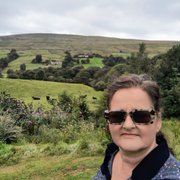Sarah P.
Yelp
What a gem of a CATHEDRAL, it is very regal looking with multiple coloured tiles for the roof! I read on line that they conduct services in English, Spanish and Creole - how cool is that?!
Here is what I found on the web -
In August of 1929, and under the title of the Little River Mission Club, 14 men and women undertook the task of forming a new parish. This group of dedicated Catholics found a meeting room in a store on Northeast 79th Street, near Second Avenue, and began planning fundraising events for a new church building. At that time, the Little River area was under Gesu Parish, which is located in historic downtown Miami. Bishop Barry, who served as Bishop of Saint Augustine from 1922-1940, agreed that a separate parish could be created if a census showed 150 Catholic families in the area who could support such an endeavor. 3 lots were purchased on Northwest 2nd Avenue and another in the rear at Northwest 75th Street. In April of 1930, ground was broken for a church, and the first Mass was celebrated on that spot in a wooden structure on July 20, 1930. Father William Wilkinson, S.J. of Gesu Church was the celebrant and Monsignor William Barry, P.A., pastor of St. Patrick's Church in Miami Beach, preached the homily.
In October of 1930, Father Patrick J. Roche, born November 6, 1896 in County Limerick, Ireland, was appointed the first pastor of the young parish. The boundaries covered the whole area from 36th Street North to the Broward County line and from Biscayne Bay West to the Dade County line. In the summer of 1931, the parish began construction of a rectory adjacent to the church, which was completed in October of that year. A parish hall was located north of the rectory and was used in January 1935 for the first time.
One week before Christmas in 1936, the church was moved to a property that had been purchased on the east side of Northwest 2nd Avenue, the site of the present Cathedral. The wooden church was then remodeled and enlarged by moving the sanctuary back and adding two wings. Capacity then reached 600 persons.
In 1953, Fr. Roche retired and Father Patrick J. Donoghue was appointed pastor. Due to the growth of the parish it was decided in 1954 that funds should be raised for a new church structure. The groundbreaking ceremonies were held in 1955, the twenty-fifth anniversary of the founding of the parish, with Archbishop Hurley officiating. The design of the new church was drawn from various styles based on the collaboration of Archbishop Hurley, Bishop of St. Augustine (1940 -1967), Monsignor O'Donoghue, architect Thomas J. Madden, as well as Cardinal Edward Mooney of Detroit, who, as a friend of the archbishop, was well-versed in architecture matters. Cardinal Mooney himself dedicated the new church building on January 27, 1957.
Upon completion in 1957, the design for the new church was not based on any one particular style, but it drew elements from various architectural periods. The basic structure of reinforced concrete sits upon solid rock with steel rigid frames supporting the walls and roof. Exterior walls were constructed of concrete block stucco outside and plastered inside. The roof was covered with fired clay tiles, and the concrete dome, rising seven stories above the altar, was covered initially with lead and later with colored-glazed tile. The design included a southwest corner tower rising more than twelve stories and capped with a glazed tile dome and metal cross. The main portal was formed by two great mahogany doors, framed in a massive cut keystone frame thirty feet high. Brass hinges held the doors that were further enhanced by a pattern of brass bolts and plates. Over the altar, the ceiling rose to a height of seventy-six feet, where its roof formed the underside of the concrete dome. The nave, measuring one hundred and forty-feet long, eighty-two feet wide and five stories high, included a seven-foot main aisle and two five-foot side aisles. The nave floor was terrazzo, and the nave itself was flanked by five arches supporting the aisle roofs. Lights suspended from the ceiling each measured five feet in width.
_______________________
Final funeral services for Jackie Gleason were held at St. Mary's Cathedral in 1987 John Herbert Gleason (February 26, 1916 - June 24, 1987) was an American actor, comedian, writer, composer, and conductor known affectionately as "The Great One." Developing a style and characters from growing up in Brooklyn, New York, he was known for his brash visual and verbal comedy, exemplified by his city-bus-driver Ralph Kramden character in the television series The Honeymooners. He also developed The Jackie Gleason Show, which maintained high ratings from the mid-1950s through 1970. After originating in New York City, filming moved to Miami Beach, Florida in 1964 after Gleason took up permanent residence there.
Among his notable film roles were Minnesota Fats in 1961's The Hustler (co-starring with Paul Newman), and Buford T.




